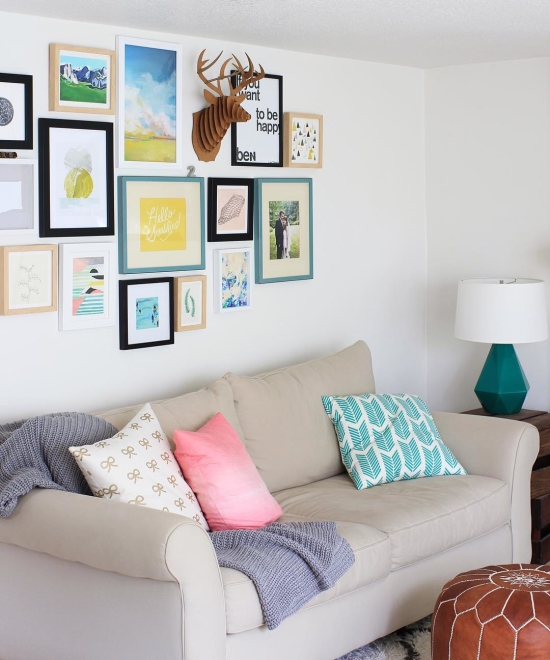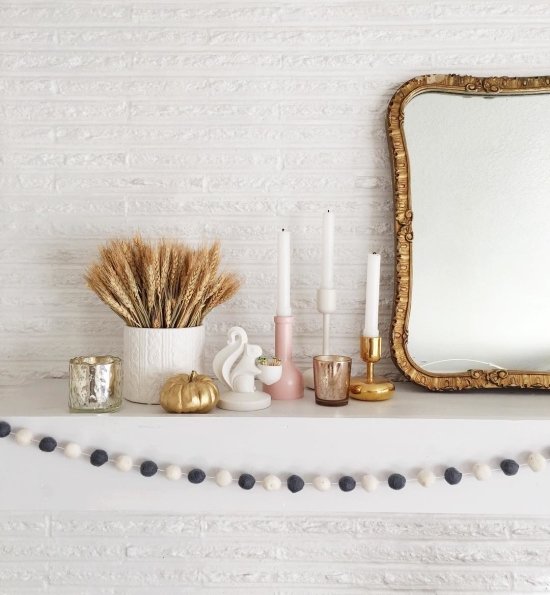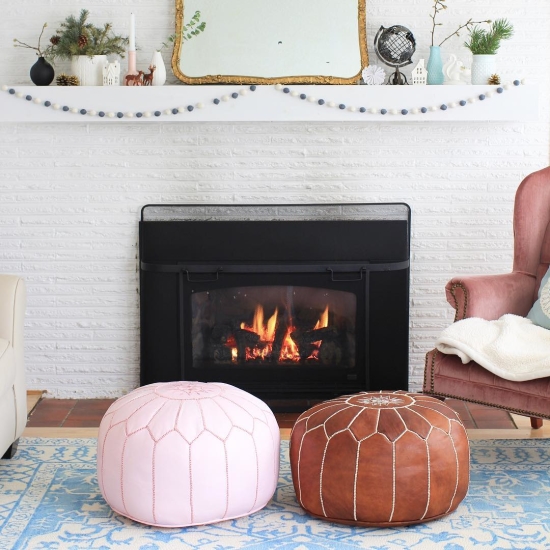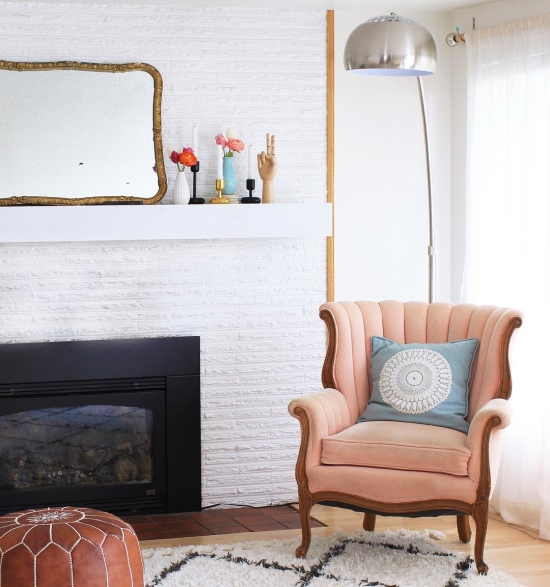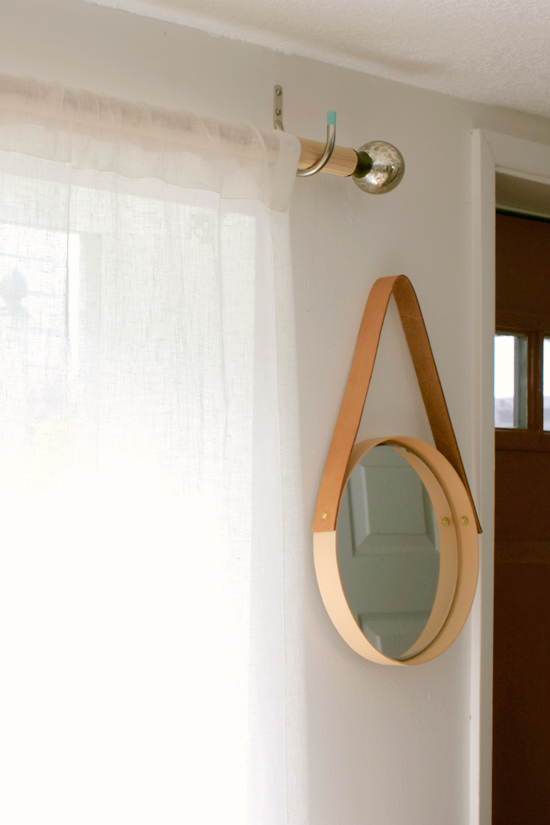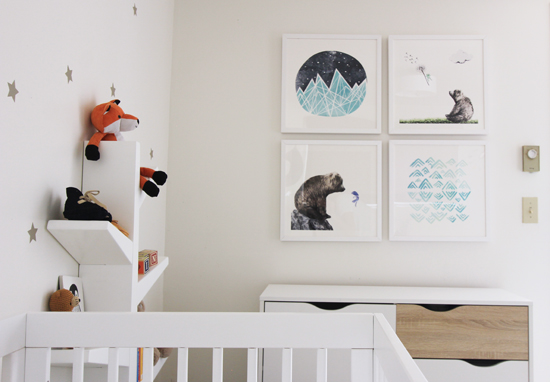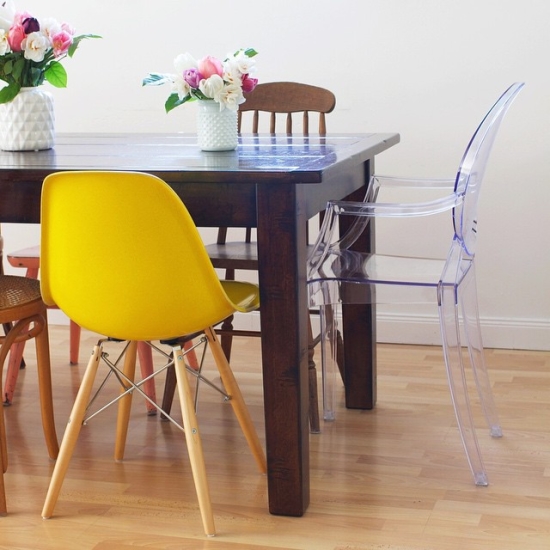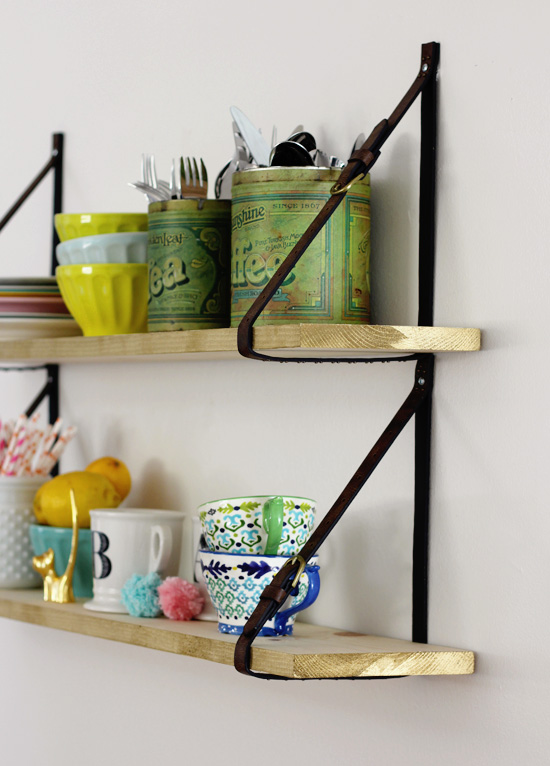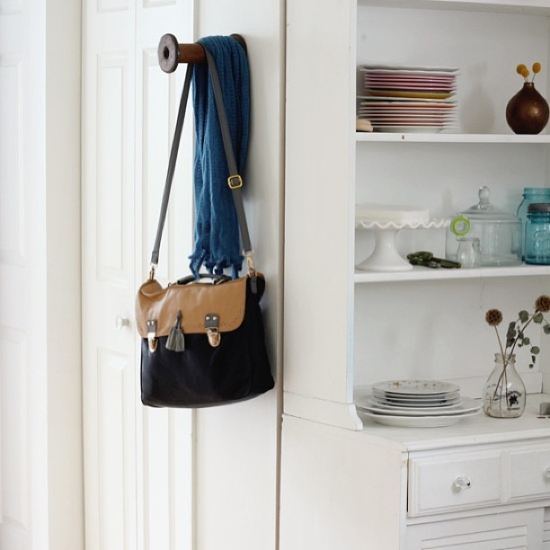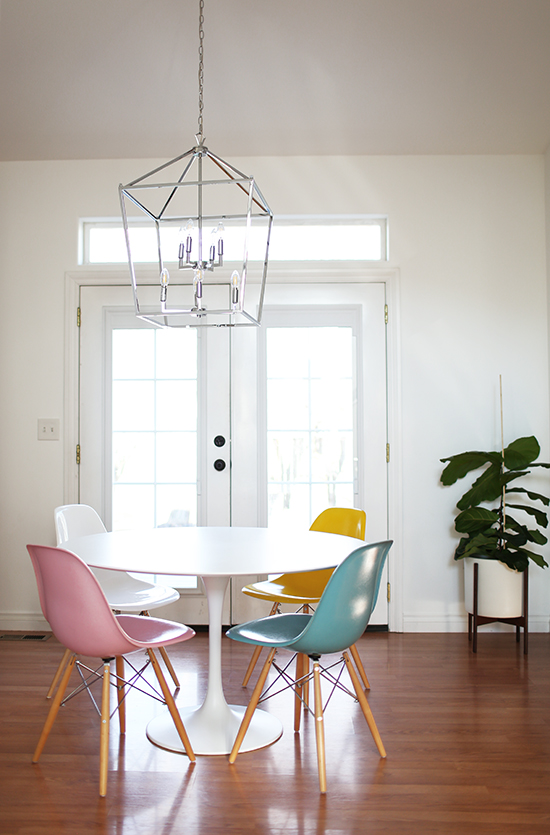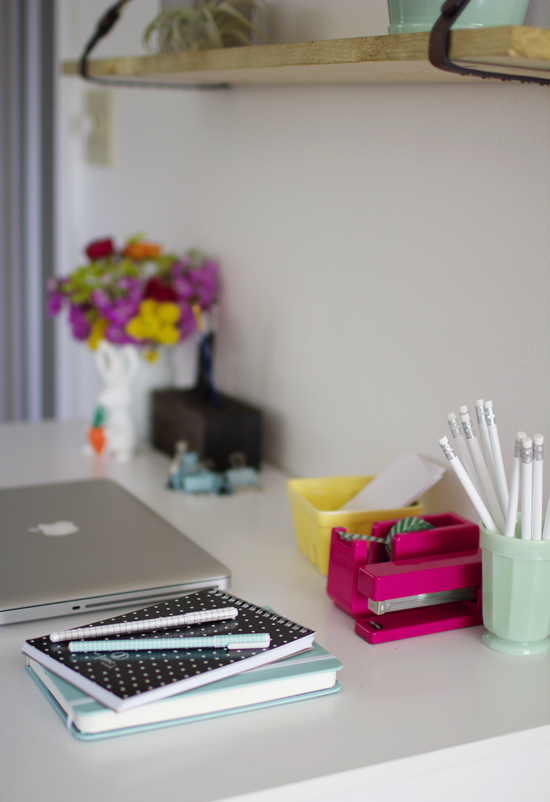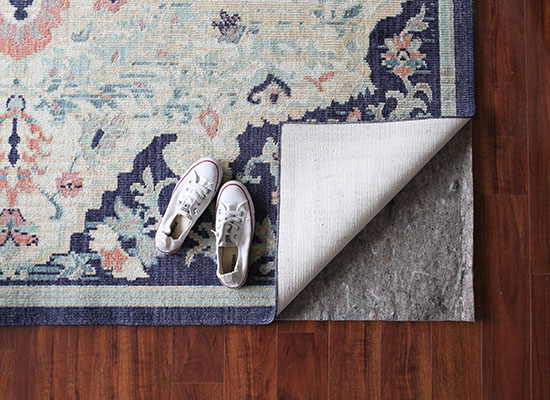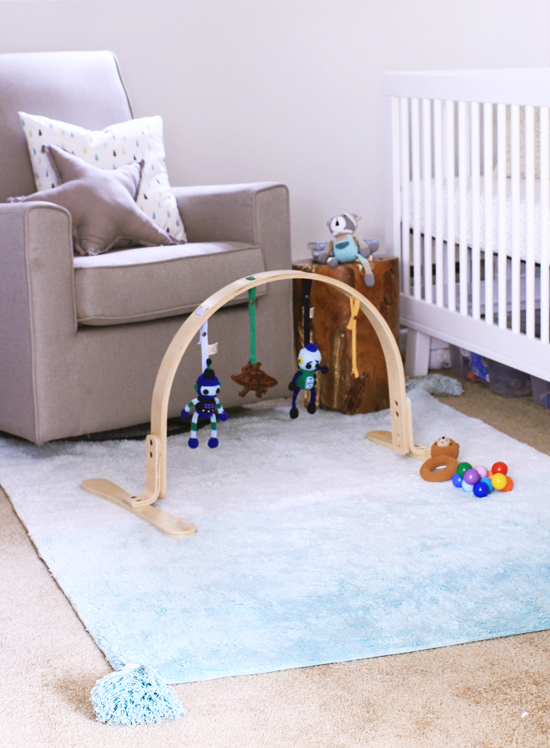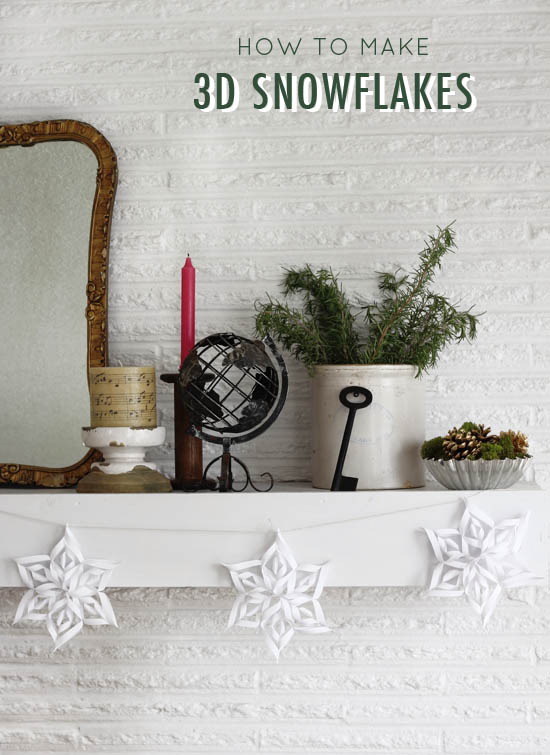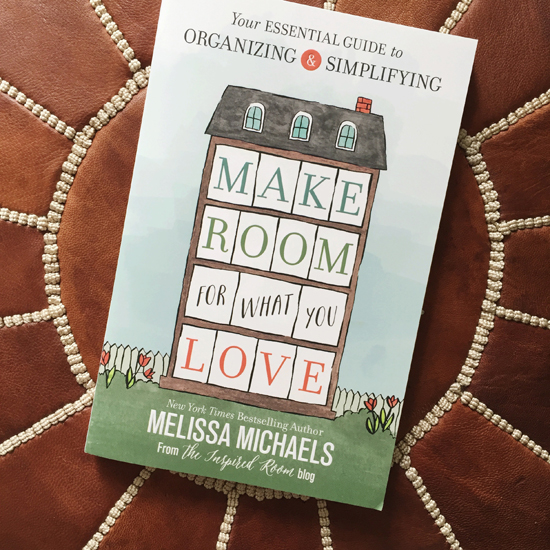01
This is a collaborative post. All opinions are my own.
Ben and I were reflecting the other day on how we lived in a small, short-ceilinged basement apartment for FOUR years in Edmonds. In hindsight, I'm not sure how we did it; but at the time, our home didn't actually feel that tiny. I think it's because we made a lot of good design choices that made our small space feel larger. I mean, it never felt huge, but it was cozy and peaceful. Now that we live in a house that's more than twice the size of our old apartment (with tall, vaulted ceilings instead of short, 7 ft ones), I recognize that every type of home has its own design challenges. Small spaces are easy in some ways; there's less furniture to buy, less wall space to fill with art, and just less decisions to make. But they're a challenge too. One interior design mistake can result in a cramped, claustrophobic den that is anything but restful. Of course, there are few ways to make a small home physically larger, but they're expensive. So first, try these tips that will trick the eye into seeing more space. You can visually add "square footage" without actually changing the footprint of your house at all. These photos are all from my old home, our #edmondsbasement apartment. Although I would never want to live there with two young kids, I have lots of fond memories from this time and I'll probably always feel a little nostalgic about it. You'll see that almost all the photos are from our living room, because that was the only room in the house with decent sized windows!
1. Paint the Walls White
White makes spaces look much larger. It reflects light back into the room, making it appear brighter and more open. A continuous white paint job on the walls also tricks the eye into thinking a home is bigger than it is, because it isn't chopped up by different colors that make it obvious where each room ends.
2. Limit Your Color Scheme
If you would rather not have an all-white interior, then try decorating in limited hues--especially soft shades that work together well, like mint green, pastel blue, and lilac. When your home already feels quite small, it makes sense to stick with tones, tints, and shades from the same color family. Contrasting colors break spaces up, making them feel smaller than they are. A monochromatic color scheme, on the other hand, is easy on the eyes, which means that you can take in the whole room without being distracted.
3. Add a Mirror
A well-known interior design trick is to add a mirror (or two, or three!). Mirrors instantly make a space feel larger, by bouncing light around and giving the illusion of depth, instead of the wall being a hard stop.
4. Keep The Windows Clean
Windows are actually a big plus for a small room, and should make it feel larger. But when they're covered in distracting dirt and grime that prevents natural light from getting into your home, they're more of a negative. Light is vital in making a room feel spacious, so make an effort to keep your windows clean.
5. Stick To Lightweight Fabrics
Even with sparkling windows, dark and heavy window treatments make it clear where your space stops. They also absorb natural light and weight the room down, thus making it appear even smaller. To keep rooms feeling spacious, you should choose light linen curtains instead, especially ones that match the color of the walls and run from ceiling to floor (adding visual height).
6. Clear Out Any Clutter
The more stuff you have in your home, the smaller it’s going to feel. If you want your space to feel bigger, take stock of what you have in each room and clear out anything you no longer want or need. A junk removal service, like Mr Cheap Rubbish Removal, will be able to take away the things that are broken or not worth anything. The items that have value can be donated or sold online or at a yard sale.
7. Choose The Right Furniture
These days, especially in a small house or apartment, most rooms serve several purposes. The living room, for example, might be used for entertaining, eating, relaxing, and working. When you’re low on space, however, fitting several different pieces of furniture for each separate need can be difficult. This is why you should opt for multipurpose furniture, like a storage ottoman, which can be used as a table or chair too. Choosing leggy furniture will give the illusion of more space, as you’ll be able to see the floor underneath. And I also like transparent pieces in small spaces, like a lucite coffee table or dining chair. They serve their function without taking up visual weight.
8. Mount On The Walls
Floor space is crucial in making rooms feel larger. The more of it you have, the bigger the area will appear. With that in mind, you should take as much stuff off the floor as you can. Instead of storing your television on a unit, for example, you could mount it to the wall. You could also put up a few shelves around the room, rather than using a large bookcase.
9. Leave Some Shelf Space
A shelf that's crammed full doesn't exactly give off airy, spacious vibes. You might think that in a small space, you should always choose small furniture. But a smaller bookcase that's completely filled looks busier than a larger one with some breathing room. The gaps will give the illusion of space, even though you’re technically taking up more of the wall.
10. Plan The Lighting Carefully
Spaces look a lot bigger when they’re well lit. This is because our eyes are drawn to the light. While natural light is best, you can’t rely on it at all times of the day and year. The next best thing is to create multiple sources of light. If you only have one overhead light in each room, then you’re making a big mistake. This creates shadows, which will only make the space feel smaller. Using multiple sources dotted around the room will help to light up every corner. Wall sconces are especially nice because they don't use up space on your tables.
Bonus tip: Take Off The Door
If you’ve tried everything you can to make your home feel bigger, then consider taking off some doors to create more of an open concept. This will draw your eye out of the room, giving the illusion of more space. You'll want to consider how connected rooms flow together so they don't look choppy. Removing doors is not as drastic as it sounds--you can always keep the door and hang it back up if you change your mind.
Small spaces can be challenging, but hopefully these ideas will help you create a home that is cozy and comfortable, rather than cramped!

